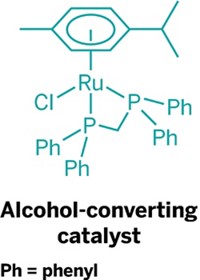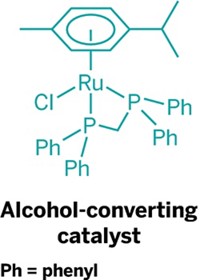Advertisement
Grab your lab coat. Let's get started
Welcome!
Welcome!
Create an account below to get 6 C&EN articles per month, receive newsletters and more - all free.
It seems this is your first time logging in online. Please enter the following information to continue.
As an ACS member you automatically get access to this site. All we need is few more details to create your reading experience.
Not you? Sign in with a different account.
Not you? Sign in with a different account.
ERROR 1
ERROR 1
ERROR 2
ERROR 2
ERROR 2
ERROR 2
ERROR 2
Password and Confirm password must match.
If you have an ACS member number, please enter it here so we can link this account to your membership. (optional)
ERROR 2
ACS values your privacy. By submitting your information, you are gaining access to C&EN and subscribing to our weekly newsletter. We use the information you provide to make your reading experience better, and we will never sell your data to third party members.
Environment
Caution on red mud use
May 22, 2017
| A version of this story appeared in
Volume 95, Issue 21
I read with interest the article “A more natural approach to catalysts” (C&EN, Feb. 20, page 26) and believe it would be constructive to share my experience in using red mud as a catalyst for biomass pyrolysis to produce biofuels. Based on the information provided by the C&EN article, including Agblevor’s Energy & Fuels referenced article and my own experience, I find that red mud used by itself as a catalyst/heat carrier in the liquefaction first step to produce biocrude oil would not perform satisfactorily because the yields are low, the gases and coke produced are high, and the oxygen content remains high.
It has been documented in published articles, and validated by the failure of KiOR’s BCC technology at a commercial plant in Columbus, Miss., that a successful business model for a process converting biomass dictates that the biocrude oil yield be more than 75 gal per dry ton of biomass and have less than 15 weight % oxygen and that production costs be less than $2.00 per gallon of fuel. Part of the problem is that in upgrading/hydrodeoxygenating biocrude oil containing more than 15 wt % oxygen, the large amount of hydrogen required increases the production cost substantially, making the process economically unsustainable.
Our KiOR R&D team recognized that red mud exhibits high heat capacity and conductivity, which can be used advantageously in catalytic pyrolysis to deliver a fast, large heat flux to the biomass particles, which is needed to effectively initiate, enhance, and sustain the thermal liquefaction process for maximum biocrude oil yield (Robert Bartek, Michael Brady, Dennis Stamires, patents WO 2010124069 published in 2010 and US 20120142520 in 2012, assigned to KiOR). For related prior art references, it should be noted that in 2013 and 2014, WO 2013098195 and US 20140309467 were published, respectively, which contain claims similar to the earlier KiOR applications for using red mud as a catalyst for biomass pyrolysis and assigned to BIOeCON, with former CTO and KiOR board member Paul O’Connor as inventor. The Agblevor work described in the C&EN article is the subject of a 2015 patent application, US 20150065762.
The key point here is that certain standards of performance must be achieved in order to be able to build up a business that, without government subsidies, will be economical, sustainable, profitable, and cost-competitive compared with similar products derived from petroleum feeds. It’s a valuable lesson to others working in this field to know about these challenges.
Dennis Stamires
Newport Beach, Calif.





Join the conversation
Contact the reporter
Submit a Letter to the Editor for publication
Engage with us on Twitter